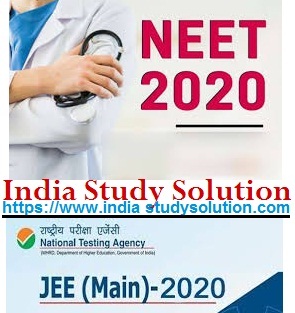s-Block Elements (Alkali Metals, Alkaline Earth Metals)
India Study Solution Test Series (Chemistry - Confidence Booster)
NEET, JEE IIT, AIIMS, NTSE | Engineering, BDS, MBBS Admission Test
Hi Guys,
As you are aware that in each set of India Study Solution test series we bring for you another 10 most important questions with their hints & solutions. This post is from our Chemistry Solutions exclusively on Group-I and Group-II elements of Periodic Table.
In each set you will find a combination of typically important some basic with some advanced level questions very helpful for doing online preparation especially for NEET, JEE (IIT) and all other MBBS Admission Tests, Engineering Entrance Exams, NTSE etc.
Many coaching institutes in India are charging thousands of rupees whereas you can get the same benefit in this site sitting at home just free of cost. How’s that !!
Please scroll down to find NEET and JEE syllabus of s-Block elements.
Chemistry Practice Questions: s-Block Elements
(Alkali and Alkaline Earth Metals)
(Group 1 Elements: Alkali Metals; Group 2 Elements: Alkaline Earth Metals)
India Study Solution MCQ Test Series – Set 3 (Q. No 21-30)
Question 21: A substance x is a compound of s-block element, substance X gives a violet colour in flame test, X is:
a. LiCl
b. MgCl
c. BaCl2
d. KCl
Question 22: During electrolysis of fused NaH, product obtained at anode
a. H2
b. O2
c. Na
d. H2O2
Question 23: Potassium carbonate is not prepared by:
a. Solvay process
b. Le-Blanc process
c. Prechts process
d. None of these
Question 24: Caustic soda is:
a. efflorescent
b. deliquescent
c. hygroscopic
d. oxidant
Question 25: Beryllium chloride can easily be hydrolysed, this is because
a. BeCl2 is covalent in nature
b. BeCl2 is ionic in nature
c. It has higher value of hydration energy due to smaller size of Be+2
d. It has higher value of hydration and lattice energy
Question 26: Sodium and potassium react with water much more vigorously than lithium because:
a. sodium and potassium have high values of hydration energy as compared to that of lithium
b. sodium and potassium have higher melting point than that of lithium
c. sodium and potassium have lower melting point than that of lithium
d. sodium and potassium have lower hydration energy than that of lithium
Question 27: Alkaline earth metals show:
a. divalency
b. monovalency
c. variable valency
d. zero valency
Question 28: Which one of the following compounds is a peroxide?
a. NO2
b. KO2
c. BaO2
d. MnO2
Question 29: Plaster of Paris hardens by:
a. giving off CO2
b. utilising water
c. changing into CaCO3
d. giving out water
Question 30: A is a s-block element and on reaction with nitrogen, it gives an ionic compound B. compound C and D is formed when B reacts with water. Solution of C becomes milky when CO2 is passed through it then in the above sequence of reaction, A and D are respectively
a. Ca, Ca(OH)2
b. Li, Ca(OH)2
c. Ca3N2, NH3
d. Ca, NH3
s-Block Elements / Alkali and Alkaline Earth Metals (NEET / JEE syllabus):
General characteristics, electronic configuration, occurrence, anomalous properties of the first element of each group, diagonal relationship, trends in the variation of properties (such as ionization enthalpy, atomic and ionic radii), trends in chemical reactivity with oxygen, water, hydrogen and halogens; uses of the compounds of Group I Elements (Alkali Metals) and Group II Elements (Alkaline Earth Metals). Preparation and Properties of Some important Compounds: sodium carbonate, sodium chloride, sodium hydroxide and sodium hydrogen carbonate, biological importance of sodium and potassium. Anomalous behaviour of beryllium. Industrial use lime and limestone, biological importance of Mg and Ca.
>>>>> <<<<<
India Study Solution - Hints and Solutions Chemistry MCQ Test Series
Alkali and Alkaline Earth Metals (s-Block Elements)
(Group 1 Elements: Alkali Metals; Group 2 Elements: Alkaline Earth Metals)
Solutions of Chemistry Test Series (MCQ) – Set 3 (Q. No.21–30)
Answer 21: d (Hint: In the flame test of KCl gives violet colour).
Answer 22: a. Answer 23: a. Answer 24: b. Answer 25: c.
Answer 26: c (Hint: When sodium and potassium react with water, the heat evolved causes them to melt, giving a larger area of contact with water, lithium on the other hand, does not melt under these condition and thus reacts more slowly. Melting points of Li, Na, and K are 180, 98 and 64 (0C) respectively).
Answer 27: a. Answer 28: c. Answer 29: b. Answer 30: d.
s-Block Elements (Alkali and Alkaline Earth Metals):
More questions to follow

















